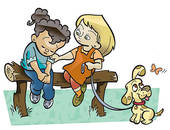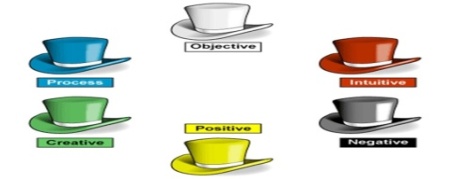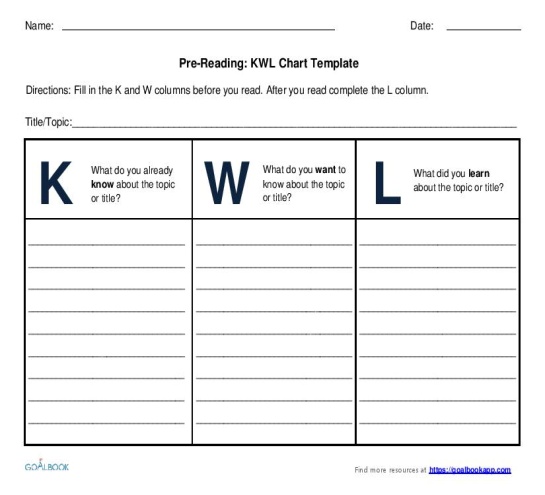ВУЗ: Не указан
Категория: Не указан
Дисциплина: Не указана
Добавлен: 12.12.2023
Просмотров: 217
Скачиваний: 13
ВНИМАНИЕ! Если данный файл нарушает Ваши авторские права, то обязательно сообщите нам.
Relative clauses
1 Underline any relative pronouns that can be left out in these sentences.
-
I think that my boss is the person who I admire most -
Harry, who was tired, went to bed very early. -
We're taking the train that leaves at 6.00. -
Have you seen the book that I left here on the desk? -
The film which we liked most was the French one. -
My radio, which isn't very old, has suddenly stopped working. -
The clothes which you left behind are at the reception desk. -
The couple who met me at the station took me out to dinner. -
Last week I ran into an old friend who I hadn't seen for ages. -
Don't cook the meat that I put in the freezer, it’s for the dog.
2 Replace the relative pronoun underlined with “that“, where possible.
-
This is the magazine which I told you about.
This is the magazine that I told you about.
-
John's flat, which is in the same block as mine, is much larger. -
The girl whose bag I offered to carry turned out to be an old friend. -
The policeman who arrested her had recognised her car. -
I work with someone who knows you. -
We don’t sell goods which have been damaged. -
Brighton, which is on the south coast, is a popular holiday resort -
I don’t know anyone whose clothes would fit you. -
There's a pub near here which serves very good meals. -
People who park outside get given parking tickets.
3 Decide whether each sentence contains a defining or a non-defining relative clause.
-
Everyone who got to the sales early found excellent bargains. -
Leave the questions which you can't answer until the end. -
Helen picked up the book, which had a green cover. -
The guests who were late didn't have enough to eat. -
Sue, who was extremely hungry, decided to cook some spaghetti. -
The person I spoke to before said the repair would be free of charge. -
My bedroom, which was rather small, looked out on a noisy street. -
David's sister, who likes cats, offered to take one of the kittens. -
The person who finishes first will be the winner, of course. -
Smith, who had earlier missed a penalty, scored after twenty minutes.
Short term lesson plan
| Unit of a long term plan Unit 9 Science and technology Lesson plan 96 | School: | ||||||||
| Date: | Teacher’s name: | ||||||||
| Class: 9 | Number present: | Number absent: | |||||||
| Lesson title | Reacting to news and sympathizing p.110 | ||||||||
| Learning objectives(s) that this lesson is contributing to | 9.L6 deduce meaning from context in unsupported extended talk on a wide range of general and curricular topics, including talk on a limited range of unfamiliar topics 9.L8 recognise inconsistencies in argument in extended talk on a range of general and curricular subjects 9.C7 develop and sustain a consistent argument when speaking or writing 9.C9 use imagination to express thoughts, ideas, experiences and feelings 9.L2 understand specific information in unsupported extended talk on a wide range of general and curricular topics, including talk on a limited range of unfamiliar topics 9.L3 understand the detail of an argument in unsupported extended talk on a wide range of general and curricular topics, including talk on a limited range of unfamiliar topics 9.UE17 use if / if only in third conditional structures. | ||||||||
| Lesson objectives | All learners will be able to:
Most learners will be able to:
Some learners will be able to:
| ||||||||
| Planned timings | Teacher activities | Sts activities | Ass-t | Resources | |||||
| Beginning of the lesson 7 min. | The lesson greeting. The teacher sets the lesson objectives, letting students know what to anticipate from the lesson. Then to create a positive learning environment the teachers asks students to start the lesson giving each other compliments about appearance, job performance, talent, etc. and also practice accepting compliments. Watching the pictures, the learners are asked to predict the topic of the lesson.  Warm up.Free talk about the reaction to different news.    A PROBLEM SHARED IS A PROBLEN HALVED. The teacher asks students who they talk to when they are feeling upset or worried. | Sts respond to greeting Sts talk about the reaction to different news | Formative ass-t | Student Book p.110 Writing Worksheet Pictures | |||||
| Main Activities 15 min. 12 min | Main part Ex.1 p.110. Identifying the feelings of a girl. Predicting based on the picture. Answer: They are chatting and Marie doesn’t feel happy. Ex.2 p.110. Gist listening. Is Dan optimistic or pessimistic about Marie’s situation? Pay attention to useful speech phrases: It isn’t the end of the world. Don’t take it too badly. It is not worth worrying about. Cheer up! Dan is optimistic. Prove it. Sentence completion task. Role-play. Ex.3. Listen to the key - phrases and complete the dialogue: Answers: 1. look 2.hear 3.end 4.badly 5.this 6. up What will you advise to do? How will you sympathize people? Ex.4 p.110. Sentence completion task. Role-play. Pronunciation practice. Speak about conditions in these sentences. Ex.5 - 6 p.110. Do this exercise in pairs. In pairs, make new mini- dialogues using active words combinations and key - phrases. OPTIONAL ACTIVITY: Communication. The teacher asks students to work individually and think of a situation which might make them unhappy. The students move around the class and tell each other about the situation The one student will make a general review of some problems and their solutions. | Sts do the ex-s | Formative ass-t | Student Book p.110 CD. 3.26. Pictures PPT CD. 3.27. CD. 3.28. CD. 3.29. Student Book p.110 Teacher's Book p.132 | |||||
| Ending the lesson 6 min. | Giving the home task. St.B. Ex.6p.110(w) Students express their attitude to the lesson and give self-assessment using the method: “Six thinking hats”:
Yellow: What did you like about today's lesson? "Six thinking hats" | Sts reflect the lesson | oral | | |||||
Short term lesson plan
| Unit of a long term plan Unit 9 Science and technology Lesson plan 97 | School: | ||||||||
| Date: | Teacher’s name: | ||||||||
| Class: 9 | Number present: | Number absent: | |||||||
| Lesson title | Writing: An experience. Practicing writing about a personal experience. p.111 | ||||||||
| Learning objectives(s) that this lesson is contributing to | 9.C7 develop and sustain a consistent argument when speaking or writing 9.C9 use imagination to express thoughts, ideas, experiences and feelings 9.L3 understand the detail of an argument in unsupported extended talk on a wide range of general and curricular topics, including talk on a limited range of unfamiliar topics 9.L4 understand implied meaning in unsupported extended talk on a wide range of general and curricular topics, including talk on a limited range of unfamiliar topics 9.R5 deduce meaning from context in extended texts on a wide range of familiar general and curricular topics, and some unfamiliar topics 9.R7 recognise typical features at word, sentence and text level in a wide range of written genres, including some which focus on unfamiliar topics 9.W1 plan, write, edit and proofread work at text level with minimal teacher support on a range of general and curricular topics | ||||||||
| Lesson objectives | All learners will be able to:
Most learners will be able to: *Select, compile, and synthesize information from the reading passage for an oral presentation.
Some learners will be able to: * Respond to and discuss the reading passage using interpretive, evaluative and creative thinking skills; *Write an opinion essay building extensive sentences. | ||||||||
| Planned timings | Teacher activities | Sts activities | Ass-t | Resources | |||||
| Beginning of the lesson 7 min. | The lesson greeting.  The teacher sets the lesson objectives, letting students know what to anticipate from the lesson. Then to create a positive learning environment the teachers asks students to start the lesson giving each other compliments about appearance, job performance, talent, etc. and also practice accepting compliments. Watching the words on the board, the learners are asked to predict the topic of the lesson. ROBOTICS/ Science Exam/ Fail/ feed up/ Robotics competition. Warm up.Free talk about the theme, the problems of a boy, his feelings and emotions. In pairs, Sts. speak about this headline and give their versions. | Sts respond to greeting Sts. speak about this headline and give their versions | Formative ass-t | Student Book p.111. Writing Worksheet | |||||
| Main Activities 15 min. 12 min | Main part Sts. read the text and make a mind - map: “Personal Experience". Ex.1 p.111. Activity 2: Read the model text again and answer the questions. Ex.2. p.111. Activity 3: The Sts. Are going to work with the words and key – phrases and in groups speak about a happy ending. Language point: Modifying comparatives. Order the words: Ex.3. Optional Activity: Language Focus. Creative exercise. Activate. Write a story with a title “A happy ending”. | Sts. read the text and make a mind - map: “Personal Experience". | Formative ass-t | Student Book p.111 Pictures PPT Teacher’s Book p.133 | |||||
| Ending the lesson 6 min. | Giving the home task. W.B. p.75, A composition” A happy ending”. Students express their attitude to the lesson and give self-assessment using the method: “Six thinking hats”:
Yellow: What did you like about today's lesson? "Six thinking hats"  | Sts reflect the lesson | oral | | |||||
Peer-assessment.

| | | | |
| Your text is interesting to read | | | |
| Your text is well structured | | | |
| Your English sounds fluent. You vary your sentences in length and structure | | | |
| You know a lot of words | | | |
| You spell the words right | | | |
| Your text is grammatically correct and your sentences make sense | | | |
Short term lesson plan
| Unit of a long term plan Unit 9 Science and technology Lesson plan 98 | School: | |
| Date: | Teacher’s name: | |
| Class: 9 | Number present: | Number absent: |
| Lesson title | Review 9 p.114 Summative assessment for the 9th unit | |
Short term lesson plan
| Unit of a long term plan Unit 9 Science and technology Lesson plan 99 | School: | |||||||||
| Date: | Teacher’s name: | |||||||||
| Class: 9 | Number present: | Number absent: | ||||||||
| Lesson title | My Country. Science and technology.p.112 | |||||||||
| Learning objectives(s) that this lesson is contributing to | 9.L1 understand a sequence of supported classroom instructions 9.C2 use speaking and listening skills to provide sensitive feedback to peers 9.S1 provide basic information about themselves and others at sentence level on an increasing range of general topics 9.S7 use appropriate subject-specific vocabulary and syntax to talk about a limited range of general topics 9.R7 recognise typical features at word, sentence and text level in a limited range of written genres 9.W1 plan, write, edit and proofread work at text level with support on a limited range of general and curricular topics | |||||||||
| Lesson objectives | All learners will be able to:
Some learners will be able to: Respond to and discuss the reading passage using interpretive, evaluative and creative thinking skills; Demonstrate the ability to find correct information without any mistakes; Apply topic related vocabulary in speech with grammar accuracies. | |||||||||
| Planned timings | Teacher activities | Sts activities | Ass-t | Resources | ||||||
| Beginning of the lesson 7 min. | The lesson greeting. The teacher sets the lesson objectives, letting students know what to anticipate from the lesson. Then to create a positive learning environment the teachers asks students to start the lesson giving each other compliments about appearance, job performance, talent, etc. and also practice accepting compliments. Watching the fragments from the film, the learners are asked to predict the topic of the lesson.  Warm up. Free talk about future cities. The teacher asks Sts. in pairs to speak about changes in new cities. Use a Venn’s Diagram for this task:  Compare cities: in the past/ nowadays/ in the future. | Sts respond to greeting. Compare cities: in the past/ nowadays/ in the future. Use a Venn’s Diagram for this task: | Formative ass-t | Top 10 Futuristic Movie Cities http://www.WatchMojo.com Venn Diagram. | | |||||
| Main Activities 15 min. 12 min | Main part Look at these words and give definitions and define parts of speech. Ex.1 – 2 p.112. What can you say about cities of future? Listen and read the text "Cities of the future". While listening to the text, complete it with the missing sentences. Activity 2. Speak about the imaginary facts in the present and past.Ex.3 Creative Exercise. Planning an expedition to a future city. Make a picture of the place you are going to visit. Work in groups of 3; make a design of a city in 2050. Ex.4 – 5 p.112. Today, cities are overshadowed by multiple threats: climate change, overpopulation, social division, and urban warfare all endanger our way of life in urban areas. The fundamental way in which we make sense of these uncertain futures is through the imagination. Architects, artists, filmmakers and fiction writers have long been inspired to imagine cities of the future, but their work tends to be based on scientific predictions that separate hard evidence from flights of fancy. In a digital age when the real and the virtual exist together, it is important to know how the two are entangled, and how together they may help us to think of the future. Exploring a breathtaking range of imagined cities – submerged, floating, flying, vertical, underground, ruined and salvaged.  | Listen and read the text. Speak about the imaginary facts in the present and past.Ex.3 | Formative ass-t | Student Book p.112 CD. 3.30. Pictures PPT Student Book p.112 | | |||||
| Ending the lesson 6 min. | Giving the home task. St.B. p.112 Ex.5 A Kazakh Scientist (topic) W.B. p.76 Students express their attitude to the lesson and give self-assessment using the method: “Six thinking hats”:
Yellow: What did you like about today's lesson? "Six thinking hats"  | Sts reflect the lesson | oral | | ||||||
Short term lesson plan
| Unit of a long term plan Unit 9 Science and technology Lesson plan 100 | School: | |
| Date: | Teacher’s name: | |
| Class: 9 | Number present: | Number absent: |
| Lesson title | Summative Control work for the fourth term. | |
Short term lesson plan
| Unit of a long term plan Unit 9 Science and technology Lesson plan 101 | School: | ||
| Date: | Teacher’s name: | ||
| Class: 9 | Number present: | Number absent: | |
| Lesson title | CLIL. Physics and chemistry: Satellites and spacecraft. p.113 | ||
| Learning objectives(s) that this lesson is contributing to | 9.C3 respect differing points of view 9.C7 develop and sustain a consistent argument when speaking or writing 9.C9 use imagination to express thoughts, ideas, experiences and feelings 9.L6 deduce meaning from context in unsupported extended talk on a wide range of general and curricular topics, including talk on a limited range of unfamiliar topics 9.L8 recognise inconsistencies in argument in extended talk on a range of general and curricular subjects 9.S3 explain and justify their own and others’ point of view on a range of general and curricular topics 9.S6 link comments with flexibility to what others say at sentence and discourse level in pair, group and whole class exchanges 9.R7 recognise typical features at word, sentence and text level in a wide range of written genres, including some which focus on unfamiliar topics | ||
| Lesson objectives | All learners will be able to:
Most learners will be able to:
Some learners will be able to:
| ||
Plan of the lesson:
| Planned timings | Teacher activities | Sts activities | Ass-t | Resources | ||||||||
| Beginning of the lesson 7 min. | The lesson greeting. The teacher sets the lesson objectives, letting students know what to anticipate from the lesson. Then to create a positive learning environment the teachers asks students to start the lesson giving each other compliments about appearance, job performance, talent, etc. and also practice accepting compliments. Watching the pictures, the learners are asked to predict the topic of the lesson.  Warm up.Free talk about space and space travel. The teacher asks Sts. in pairs to speak about films about space and space explorations and make a list of films. What do you know about space?  | Sts respond to greeting Sts talk about space and space travel. | Formative ass-t | useful phrases K-W-H-L Chart. | ||||||||
| Main Activities 15 min. 12 min | Main part Look at these words, give definitions and do matching exercise. Ex.1 – 2 p.112. Ask the students to find out compound words. Listen and read the text "Out of this world". While listening to the text, complete it with the missing words. Activity 2. Answering true/false questions.Ex.3 Brainstorming. The students are given dates of figures. In the groups of 4, they try to give the event of great importance. The winning team will be rewarded. 1957, 3000, 1990s, 200000$, $35mln, Gagarin, Armstrong. Discussion : Task: Lead the discussion about the popularity of space tourism. Prepare 5 open-ended and thought-provoking questions about the story that your group might want to discuss. Help others talk about the main idea, help them share their thoughts and feelings. Descriptors: 1. Write 5 open-ended questions. 2. Write your responses to these questions. 3. Keep the discussion going.
Speak about Kazakh scientist. (Presentation of groups). | students to find out compound words. students are given dates of figures | Formative ass-t | Student Book p.113 CD. 3.31. Pictures Student Book p.113 Writing Worksheets | ||||||||
| Ending the lesson 6 min. | Giving the home task.W.B. p.77 Students express their attitude to the lesson and give self-assessment using the method: “Six thinking hats”:
Yellow: What did you like about today's lesson? "Six thinking hats"  | Sts reflect the lesson | oral | | ||||||||